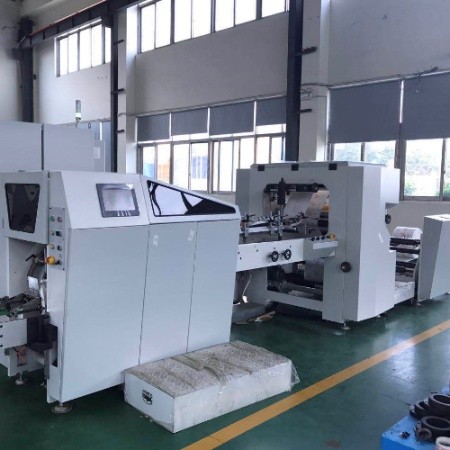Rotogravure printing, often referred to as gravure printing, is a sophisticated and high-precision printing technology that has been pivotal in the production of various printed materials, including packaging, decorative laminates, and publications. This article delves into the intricate workings of rotogravure printing machines and why they are renowned for their exceptional precision and perfection in the world of printing. Gravure printing is an intaglio process, meaning that the design is etched or engraved into the surface of a cylinder. Unlike other printing methods, such as flexography, which employ a flat plate with raised images, gravure uses a cylindrical printing form that is etched with tiny cells of varying depths. These cells hold the ink, and the depth of each cell corresponds to the total value of the image. This unique approach is what makes rotogravure stand out in terms of quality and precision.
Rotogravure printing machines, also known as rotogravure presses, are intricate pieces of machinery designed to transfer ink from these engraved cylinders to a substrate, often a flexible material like plastic, paper, or foil. Let’s explore some of the key components and features that make them a go-to choice for precision printing:
Cylinder Engraving – The heart of rotogravure printing lies in the precision of cylinder engraving. Using state-of-the-art techniques, images are etched onto the surface of the printing cylinders. The depth, shape, and pattern of these cells determine the final print quality. The ability to engrave with extraordinary detail is a hallmark of this technology.
Substrate Handling – Rotogravure machines are versatile and can handle a wide range of substrates, from thin plastic films to thick cardboards. The flexo printing machine makes them suitable for various industries, such as flexible packaging, label printing, and even decorative laminates for furniture.
 Ink Application – The ink is stored in an ink pan and transferred to the engraved cylinders using a doctor blade. This precise ink metering system ensures that the right amount of ink is applied to the cylinders, resulting in consistent color and image quality.
Ink Application – The ink is stored in an ink pan and transferred to the engraved cylinders using a doctor blade. This precise ink metering system ensures that the right amount of ink is applied to the cylinders, resulting in consistent color and image quality.
Drying and Curing – After the ink is transferred to the substrate, it needs to be dried or cured. Rotogravure presses can employ different drying methods, such as hot air, ultraviolet UV, or electron beam EB curing, depending on the specific requirements of the job. This allows for rapid production without compromising quality.
High-Speed Production – One of the key advantages of rotogravure printing is its speed. These machines are designed for high-volume production, making them ideal for tasks where precision and efficiency are equally important, such as long print runs of packaging materials.
Consistency – The combination of precise cylinder engraving and controlled ink application ensures consistent print quality from the first print to the last, making rotogravure printing machine an excellent choice for demanding applications like high-end product packaging and fine art reproduction.
Its intricate engraving process, versatile substrate handling, consistent ink application, and high-speed production make it an indispensable choice for various industries. Whether you are admiring a beautifully packaged product or flipping through the pages of a high-end magazine, you are likely experiencing the results of rotogravure’s commitment to excellence in every print.